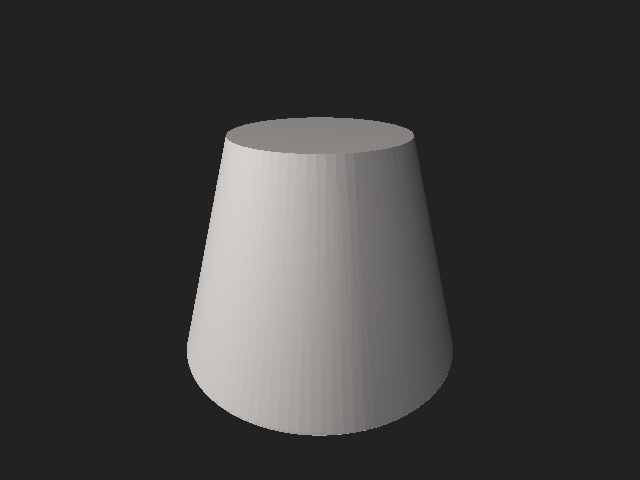Loading AI tools
Portion of a solid that lies between two parallel planes cutting the solid From Wikipedia, the free encyclopedia
In geometry, a frustum (Latin for 'morsel');[lower-alpha 1] (pl.: frusta or frustums) is the portion of a solid (normally a pyramid or a cone) that lies between two parallel planes cutting the solid. In the case of a pyramid, the base faces are polygonal and the side faces are trapezoidal. A right frustum is a right pyramid or a right cone truncated perpendicularly to its axis;[3] otherwise, it is an oblique frustum. In a truncated cone or truncated pyramid, the truncation plane is not necessarily parallel to the cone's base, as in a frustum. If all its edges are forced to become of the same length, then a frustum becomes a prism (possibly oblique or/and with irregular bases).
A frustum's axis is that of the original cone or pyramid. A frustum is circular if it has circular bases; it is right if the axis is perpendicular to both bases, and oblique otherwise.
The height of a frustum is the perpendicular distance between the planes of the two bases.
Cones and pyramids can be viewed as degenerate cases of frusta, where one of the cutting planes passes through the apex (so that the corresponding base reduces to a point). The pyramidal frusta are a subclass of prismatoids.
Two frusta with two congruent bases joined at these congruent bases make a bifrustum.
The formula for the volume of a pyramidal square frustum was introduced by the ancient Egyptian mathematics in what is called the Moscow Mathematical Papyrus, written in the 13th dynasty (c. 1850 BC):
where a and b are the base and top side lengths, and h is the height.
The Egyptians knew the correct formula for the volume of such a truncated square pyramid, but no proof of this equation is given in the Moscow papyrus.
The volume of a conical or pyramidal frustum is the volume of the solid before slicing its "apex" off, minus the volume of this "apex":
where B1 and B2 are the base and top areas, and h1 and h2 are the perpendicular heights from the apex to the base and top planes.
Considering that
the formula for the volume can be expressed as the third of the product of this proportionality, , and of the difference of the cubes of the heights h1 and h2 only:
By using the identity a3 − b3 = (a − b)(a2 + ab + b2), one gets:
where h1 − h2 = h is the height of the frustum.
Distributing and substituting from its definition, the Heronian mean of areas B1 and B2 is obtained:
the alternative formula is therefore:
Heron of Alexandria is noted for deriving this formula, and with it, encountering the imaginary unit: the square root of negative one.[4]
In particular:


For a right circular conical frustum[5][6] the slant height is
the lateral surface area is
and the total surface area is
where r1 and r2 are the base and top radii respectively.


Seamless Wikipedia browsing. On steroids.
Every time you click a link to Wikipedia, Wiktionary or Wikiquote in your browser's search results, it will show the modern Wikiwand interface.
Wikiwand extension is a five stars, simple, with minimum permission required to keep your browsing private, safe and transparent.